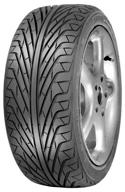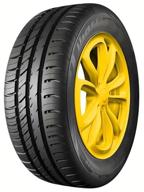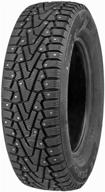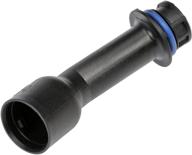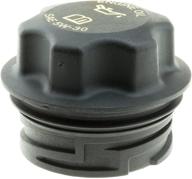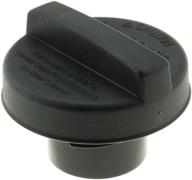Choosing the Right Replacement Cap for Your Vehicle
Replacement caps play an important role in your vehicle's engine system. Caps seal fluid reservoirs and prevent leaks, overheating, and contamination. When a cap becomes cracked, warped, or fails to seal properly, you'll need to replace it right away to prevent bigger problems.
Types of Replacement Caps
Common caps that may need replacing on a vehicle include:
- Radiator cap - seals the radiator and cooling system
- Oil fill cap - seals the engine's oil reservoir
- Transmission fluid cap - seals the transmission fluid reservoir
- Power steering fluid cap - seals the power steering fluid reservoir
- Brake fluid reservoir cap - seals the brake fluid reservoir
Matching Your Vehicle
When choosing a new cap, you need to match it to your specific make and model. Getting an incorrectly sized or rated cap can cause poor sealing and other issues.
Check your owner's manual to find the correct part numbers and specifications for each cap. Also check details like:
- Diameter and height
- Thread pitch and size
- Pressure rating
Many auto parts stores can look up the proper caps for your vehicle if you provide the year, make, and model. Buying from a reputable brand also helps ensure a quality part.
Material Considerations
Replacement caps are commonly made from plastic or metal:
- Plastic - lighter, cheaper, and durable enough for most vehicles. Avoid thin, flimsy caps.
- Metal - more durable but pricier. Often used in high-performance vehicles.
Make sure any rubber gaskets are in good shape and create a tight seal. Also, check for cracking, warping, corrosion, or other signs of wear.
Installation Tips
Here are some tips for safely installing your new caps:
- Let fluids fully cool before removing old caps.
- Clean any dirt, grime, or spilled fluids from sealing surfaces.
- Make sure new cap gaskets are properly seated.
- Tighten the cap until you feel it reach the stopper, don't overtighten.
- Start the engine and check for leaks.
With the proper replacement caps installed, you can help keep your vehicle running smoothly for years to come.
Types of Replacement Caps - Radiator, Oil, Transmission, etc.
Vehicles contain several different caps that serve important functions. These caps seal fluid reservoirs to maintain optimal operating conditions. Here are some of the replacement caps you may need for your car or truck:
Radiator Cap
The radiator cap seals the cooling system, maintaining the proper pressure and temperature. Typical features:
- Pressure rating of 7-18 PSI
- Rubber gasket for leak-proof seal
- Vents excess pressure
A faulty radiator cap can cause coolant leaks, overheating, and engine damage. Replace immediately if old cap is cracked or fails to hold pressure.
Oil Fill Cap
The oil fill cap screws into the valve cover to seal the area where oil is added. Key features:
- Prevents oil leaks and contamination
- Some have PCV valves for crankcase ventilation
- May be tethered to prevent loss
Replace if cap is missing, broken, or no longer sealing properly. Match new cap to the stock PCV system.
Transmission Fluid Cap
This cap seals the transmission fluid reservoir. Typical specs:
- Diameter around 1.5"-2.5"
- Threaded or quick-turn style
- Dipstick attached on some models
Replace immediately if cap is leaking or transmission is running hot. Ensure the replacement matches your transmission type.
Power Steering Cap
Power steering caps maintain fluid levels and system pressure. Features include:
- Rubber gasket seal
- Diameters between 1"-1.5"
- Rated up to 25 PSI
If power steering is stiff or whining, the cap may need replacement. Match new cap to factory power steering setup.
Consult your vehicle repair manual when replacing caps. Proper installation is key to preventing leaks and ensuring performance.
Matching Your Vehicle Make and Model
When replacing worn out or faulty caps on your vehicle, it's crucial to match the replacement part to your exact make and model. Using an incorrectly sized or rated cap can lead to leaks, seal failures, and engine issues.
Verify Make, Model, and Year
First, confirm the specific details of your vehicle:
- Make (for example, Ford, Toyota, BMW)
- Model (Mustang, Camry, 328i)
- Year
- Engine size
For some makes, the cap needs to match the engine type as well. You can usually find these details on a sticker inside the driver's door jamb or on the VIN plate.
Cross-Reference with Part Numbers
Next, reference your owner's manual or a parts catalog to find the correct part numbers for each cap. Here are some examples:
| Vehicle | Radiator Cap | Oil Fill Cap |
|---|---|---|
| 2018 Toyota Camry LE 4-cyl | Part# 90916-A2003 | Part# 90916-A2011 |
| 2019 Ford F-150 5.0L V8 | Part# AL3Z-8501-AA | Part# AL3Z-6750-A |
Using OEM part numbers helps ensure an exact fit and proper sealing.
Buy from Reputable Brands
Once you have the correct part numbers, purchase replacement caps from reputable brands, such as:
- ACDelco
- Bosch
- Genuine
- Mopar
- Motorcraft
Avoid cheap, generic caps that may not meet OEM specifications for fit, pressure rating, and durability. Investing in quality replacement caps helps prevent leaks and failures down the road.
Taking the time to properly match replacement caps to your exact vehicle protects your investment and keeps your engine running smoothly.
Considering Material - Plastic vs. Metal Caps
When selecting replacement caps, one choice is whether to use plastic or metal construction. Both have their pros and cons.
Plastic Caps
Plastic caps have some advantages:
- Lighter weight compared to metal
- Lower cost - plastic is cheaper to manufacture
- Noise reduction - plastic dampens vibrations
- Corrosion resistance for long life
However, plastic has some downsides as well:
- Prone to cracking over time
- Can warp or deform under high heat
- Not as durable for extreme conditions
Plastic caps from reputable brands using high-grade reinforced polymers can provide a cost-effective option for most passenger vehicles.
Metal Caps
Some benefits of metal replacement caps:
- Greater durability under high pressures
- Withstand extreme engine temperatures
- Sturdy construction less prone to cracking
- Often matches OEM cap material
Potential downsides of metal include:
- Higher cost compared to plastic
- Increased weight
- Potential for rust/corrosion over time
Metal is best for high-performance applications where pressures and temperatures exceed plastic's limits. Always use a gasket for sealing.
Key Considerations
No matter the material, ensure the cap:
- Meets OEM pressure and temperature ratings
- Contains a high-quality gasket for leak-proof seal
- Has a tight, rattle-free fit when properly installed
Choosing between plastic or metal requires balancing factors like cost, durability, and performance needs. Consult your owner's manual or a trusted mechanic when selecting replacement cap materials.
Similar products
How to use your Amazon Prime to buy "Automotive Replacement Caps"
Having an Amazon Prime membership can be very convenient when you need to purchase automotive replacement caps or any other car parts. Here are some tips on using Amazon Prime to buy quality caps for less:
Search for Parts by Vehicle
Amazon has an extensive selection of automotive parts that can be searched by your specific vehicle's make, model and year. This helps ensure fitment with your car. Go to Amazon's Automotive section and click "Shop by Vehicle" to input your details.
Check Amazon Part Finder
Use Amazon's Part Finder tool to look up replacement parts for your vehicle. Enter information like VIN number, license plate, or year/make/model to see exact match caps for oil, radiator, transmission and more.
Compare Brands and Prices
Amazon lists parts from trusted brands like Gates, Stant, Valvoline, Bosch and Mopar. Compare prices and reviews to find deals on caps that match OEM quality and fit at lower cost. Sort by Prime eligibility.
Check Warehouse Deals
Warehouse Deals feature discounted new, used and refurbished parts, including caps. You can find brand name caps up to 75% off retail price. All Warehouse Deals orders over $25 ship free.
Utilize Free Two-Day Shipping
With Prime, get free two-day shipping on all eligible items, like replacement caps. This allows fast delivery so you can complete repairs quickly. No minimum order value needed.
View Expanded Selection with Prime
Amazon Prime unlocks an expanded selection of parts for free two-day shipping and lower prices that are exclusive to Prime members only. Take advantage of this perk when buying automotive caps.
With convenient search tools, price comparisons and fast free delivery, an Amazon Prime membership makes it easy to purchase quality replacement caps for less.






